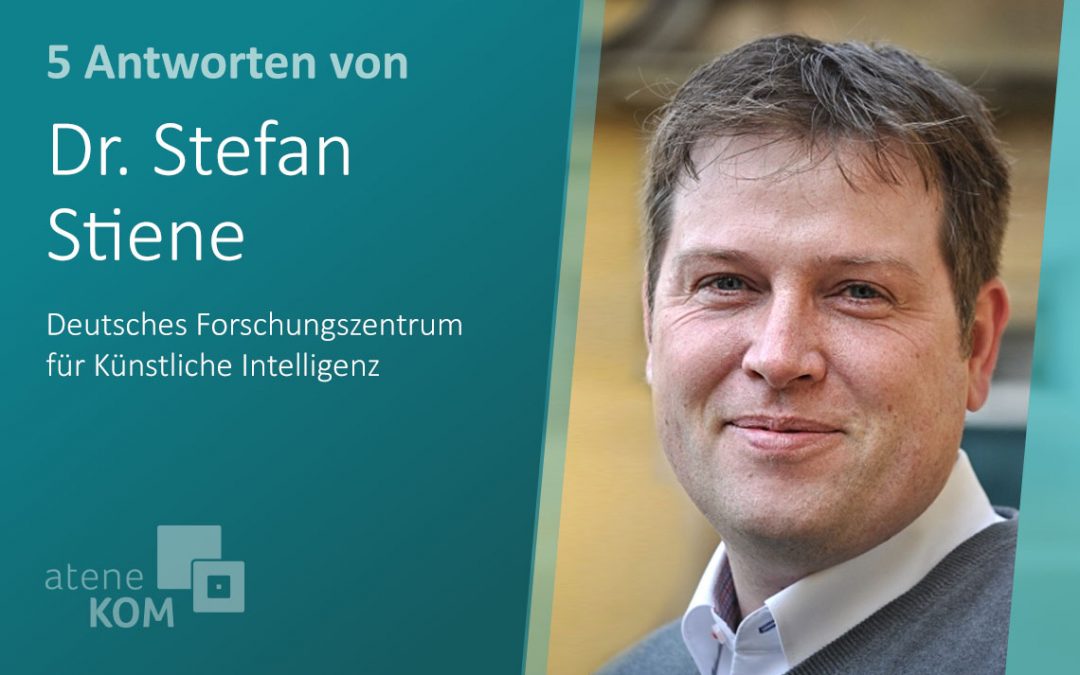Today’s agriculture has little in common with the idyllic image of the traditional farm. Agricultural businesses are also working more digitally, and artificial intelligence (AI) is taking on more and more tasks in agriculture. Universities, research institutes and companies are developing intelligent agricultural robots to support farmers in their day-to-day tasks – from soil analysis, sowing and harvesting to the maintenance of agricultural machinery. Dr. Stefan Stiene heads the Smart Agriculture Technologies Competence Centre in Osnabrück (SAAT) at the German Research Center for Artificial Intelligence (DFKI). In the interview, he told aconium what role AI plays in agriculture today and what potential intelligent robots and knowledge databases still have for the agricultural industry.
aconium: What specific examples already exist of the use of AI in agriculture?
Dr. Stefan Stiene: This could be mechanical weed control, for example. Various research prototypes have existed here for several years, but there are now also companies that market such robots. Other robots are used in harvesting. There is a spin-off from Wageningen University in the Netherlands that is developing a robot for harvesting peppers. But there are also various areas of application for AI beyond robotics: for example, in the analysis of satellite or drone data using image processing algorithms or systems that attempt to use modeling to derive predictions about weather changes in agriculture.
aconium: What other application scenarios for AI in agriculture can you imagine for the future?
Dr. Stiene: AI is not a technology, but a collection of different tools (knowledge management, language understanding, image understanding, robotics, etc.) that can add value in many areas of agriculture, either individually or in combination. Agricultural robots working around the clock could take over continuous agricultural processes. In addition, a knowledge database could be set up containing the expertise of soil and plant scientists and agricultural economists, as well as environmental and process information. Such a cross-disciplinary knowledge base can be used as a basis for AI-based support systems in the decision-making of farmers or even directly by agricultural robots.
aconium: What house demands do you see that are currently impeding or preventing the implementation of these scenarios?
Dr. Stiene: In the field of agricultural robotics, for example, it is important not only to consider where agricultural robots currently fit in, but also to further develop agricultural processes and robot systems together. What must agricultural processes look like so that the advantages of agricultural robots can be used, for example, for continuous operation or individual plant-specific processing? And how must agricultural robots be designed so that they fit in ideally? The conditions must also be created to establish such systems for hands-on use on test farms in order to evaluate their long-term operation under real conditions.
aconium: How do you think these challenges can be overcome?
Dr. Stiene: In order to optimize processes and robot systems together, this topic must be approached in an interdisciplinary manner. I see practical research projects or state-funded operation of these systems on real farms as the main way of integrating the experiences and wishes of farmers as end users into the development process.
aconium: What would you like to see for the future of AI in agriculture?
Dr. Stiene: By using the tools that AI offers, I hope that the agriculture of the future will be both ecological and efficient. Farmers will be relieved of time-consuming routine tasks. Supported by AI-based decision support systems, he will remain at the center of the strategic development of his farm. Optimized data management systems will relieve him of many documentation duties automatically, but at the same time transparently.
You can read more about artificial intelligence and digital agriculture in the dossiers on digitalization (PDF) from aconium GmbH:

